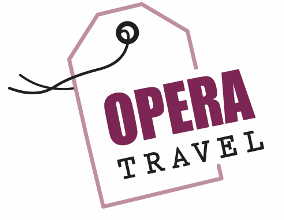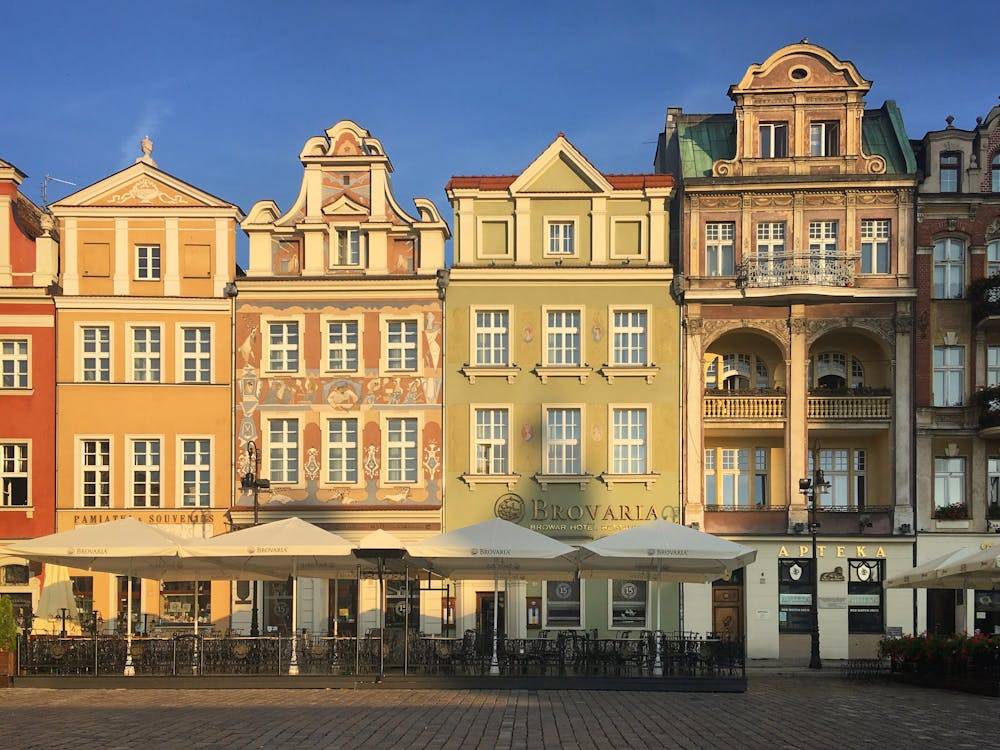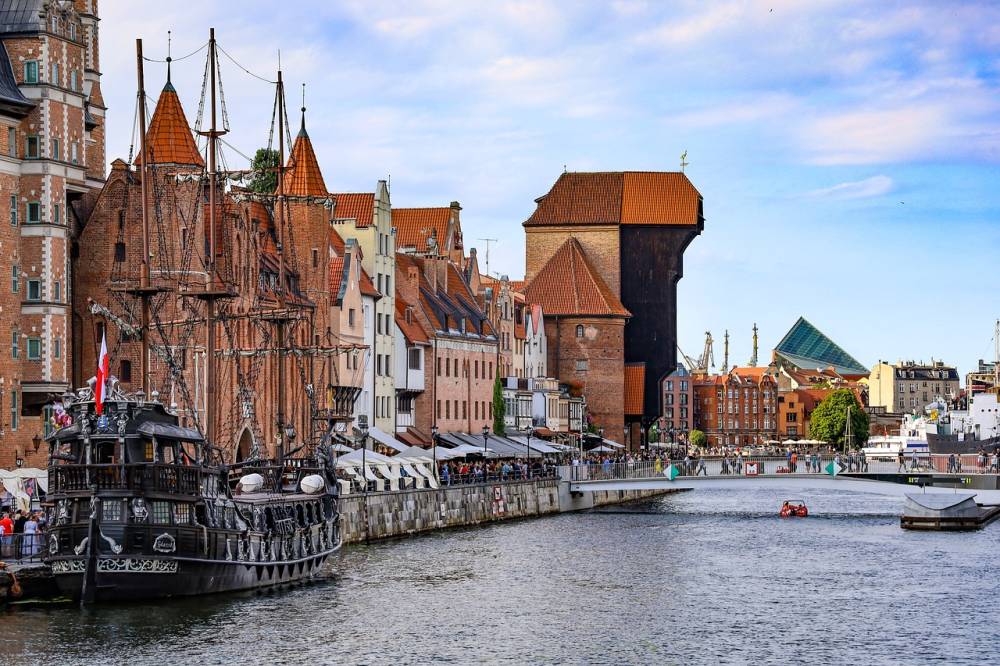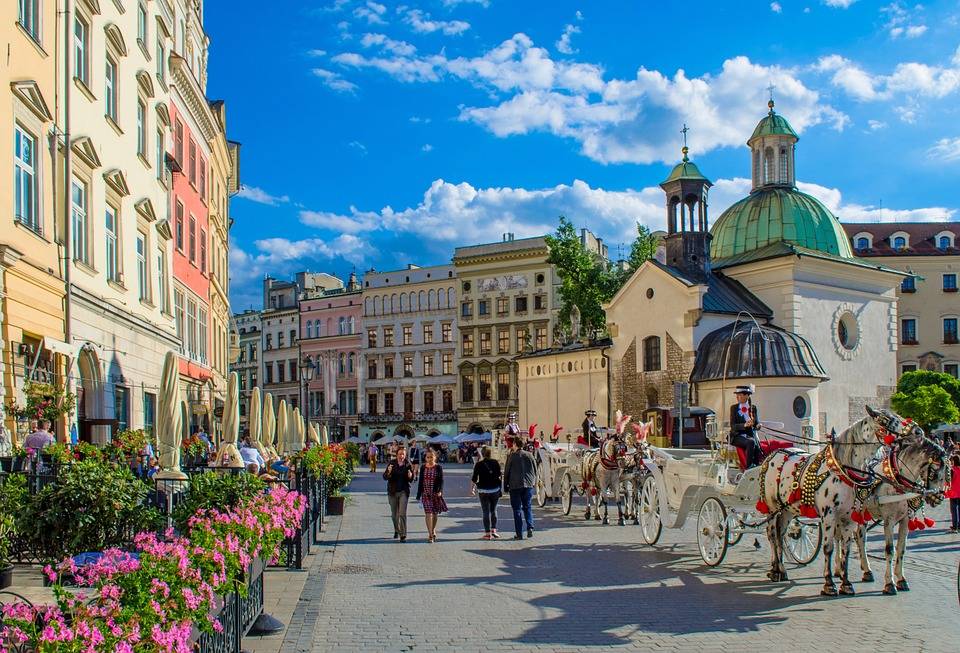Destinations
Discover your next great adventure

Explore Poland – The Heart of Central Europe
General Information:
- Capital: Warsaw
- Area: 312,696 km²
- Population: Approx. 38 million
- Currency: Polish Złoty (PLN)
- Languages: Polish (English is widely
spoken in tourist areas)
Visa Requirements:
Most visitors to Poland must:
- Hold a passport valid for at least six
months beyond their stay.
- Have an onward or return ticket.
- Show proof of sufficient funds for their
trip.
- Depending on nationality, a Schengen Visa
may be required.
Visa-Free or Visa-on-Arrival for Citizens
of:
- EU, EEA, and Schengen Area countries
(Visa-free).
- USA, Canada, UK, and many other countries
(short stays up to 90 days allowed).
- Check the latest visa policies for your
country.
About Poland:
Poland is a country where centuries of rich
history meet vibrant culture, stunning landscapes, and warm hospitality. From
medieval castles to the dynamic streets of Warsaw, Poland offers a perfect
blend of tradition and modernity. Whether you’re discovering ancient cities,
exploring natural wonders, or immersing yourself in local customs, Poland’s
unique charm will leave you fascinated.
Climate:
Poland has a temperate climate with
distinct seasons:
- Best Time to Visit: May to September
(ideal for outdoor activities and sightseeing).
- Winter (November – February): For winter
sports lovers, Poland’s mountains provide excellent ski resorts.
Main Attractions:
- Warsaw: The capital city, full of
history, from the Royal Castle to the rebuilt Old Town, along with vibrant
cafes and bustling streets.
- Kraków: A UNESCO World Heritage site,
known for its medieval architecture, the Wawel Castle, and the historic Jewish
Quarter.
- Auschwitz-Birkenau Memorial and Museum: A
somber and powerful visit to the former concentration camp, serving as a
reminder of the Holocaust.
- Gdańsk: A charming port city on the
Baltic Sea with rich maritime history and beautiful Gothic architecture.
- Wrocław: Famous for its stunning
architecture, picturesque squares, and charming bridges crossing the Oder
River.
- Zakopane: A popular winter destination in
the Tatra Mountains, perfect for skiing and hiking.
- Białowieża Forest: A UNESCO World
Heritage site and one of the last and largest remaining parts of the primeval
forest in Europe.
- Malbork Castle: The largest brick castle
in the world, dating back to the 13th century and a great example of medieval
architecture.
- Bieszczady Mountains: Perfect for hikers
and nature lovers, this region offers picturesque landscapes and peaceful
villages.
Transportation:
Poland boasts a solid infrastructure for
travel:
- Trains: Poland’s train system connects
all major cities and towns, offering a scenic way to explore the country.
- Buses: A well-established bus network
that reaches even the most remote locations.
- Taxis & Ride-Hailing: Easily
available in larger cities like Warsaw and Kraków.
- Car Rentals: Ideal for exploring rural
areas and national parks.
- Domestic Flights: Available for quick
travel to destinations like Gdańsk, Wrocław, and Szczecin.
Must-Try Food & Drinks:
- Pierogi: Dumplings stuffed with a variety
of fillings such as potatoes, cheese, mushrooms, meat, or fruits.
- Bigos: A hearty stew made from cabbage,
meat, and sausages – a true Polish comfort food.
- Żurek: A sour rye soup, often served with
sausage and a boiled egg.
- Kiełbasa: Traditional Polish sausages,
available in many different varieties and flavors.
- Placki ziemniaczane: Potato pancakes,
usually served with sour cream or applesauce.
- Gołąbki: Cabbage rolls stuffed with rice
and minced meat, then cooked in tomato sauce.
- Oscypek: Smoked cheese made from sheep’s
milk, typically found in the Tatra Mountains.
- Kefir: A traditional fermented milk
drink, similar to yogurt, widely consumed in Poland.
- Kraków Pretzel (Obwarzanek): A tasty,
soft, and braided snack, typically sprinkled with sesame seeds.
Travel Tips for Poland:
1. Visa & Entry: Many nationalities
require a Schengen Visa for Poland, so check the entry requirements before
traveling.
2. Best Time to Visit: Late spring to early
autumn for sightseeing, and winter for skiing and other snow-related
activities.
3. Transportation: Trains are the best way
to travel between cities, and renting a car is great for exploring the
countryside.
4. Local Etiquette: Poles are friendly but
formal, so it’s polite to greet with a handshake. Also, be respectful when
visiting churches and religious sites.
5. Money: Poland uses the Polish Złoty
(PLN), and most places accept credit cards, though cash is preferred in maller
towns.
6. Safety: Poland is a safe destination for
travelers, but always stay vigilant in crowded places, especially around major
tourist sites.
7. What to Avoid: Avoid public displays of
affection in more rural areas, as it may not be as widely accepted as in urban
centers.
8. Cultural Experiences: Explore Polish
folklore through music, dance, and crafts, and witness traditional festivals
such as the Kraków Christmas Market and Warsaw Autumn Festival.
Summary:



